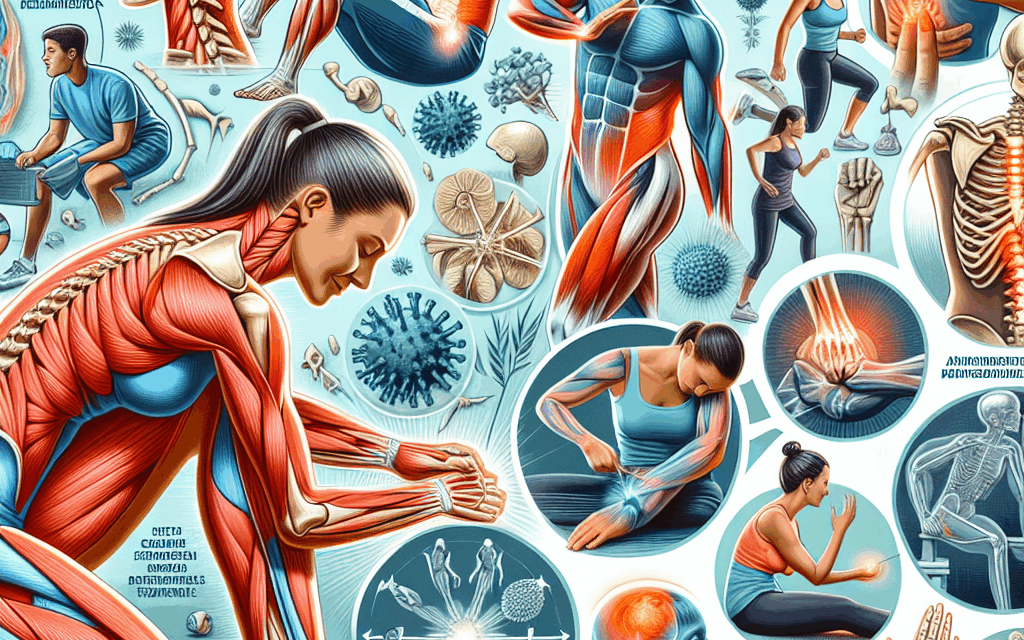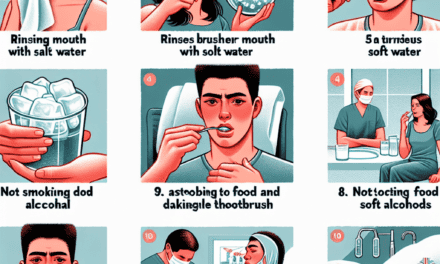Demystifying Muscle and Joint Pain: Safe Relief Strategies Uncovered
Muscle and joint pain is a common ailment that affects millions of people worldwide. Whether it’s due to injury, overuse, or chronic conditions, understanding the underlying causes and effective relief strategies is crucial for maintaining a healthy lifestyle. This article aims to demystify muscle and joint pain by exploring its causes, symptoms, and various safe relief strategies. We will delve into five key subtopics: understanding the anatomy of pain, common causes of muscle and joint pain, lifestyle modifications for pain relief, alternative therapies, and when to seek professional help.
Understanding the Anatomy of Pain
To effectively address muscle and joint pain, it is essential to understand the anatomy involved. Pain is a complex experience that involves not just the physical sensation but also emotional and psychological components. The body’s pain system consists of various structures and pathways that communicate pain signals to the brain.
The primary components of the pain system include:
- Nociceptors: These are specialized nerve endings that detect harmful stimuli, such as extreme temperatures or physical damage. They are found throughout the body, including muscles, joints, and skin.
- Spinal Cord: Once nociceptors are activated, they send signals through peripheral nerves to the spinal cord, which acts as a relay station for pain signals.
- Brain: The brain processes pain signals and interprets them based on context, past experiences, and emotional state. This is why two people can experience the same injury but report different levels of pain.
Understanding this anatomy helps in recognizing that pain is not merely a physical sensation but a multifaceted experience influenced by various factors. For instance, stress and anxiety can amplify the perception of pain, while positive emotions can help mitigate it.
Moreover, chronic pain conditions, such as fibromyalgia or arthritis, can alter the way the nervous system processes pain signals, leading to heightened sensitivity. This phenomenon, known as central sensitization, can make even mild stimuli feel painful. Recognizing these complexities is vital for developing effective pain management strategies.
Common Causes of Muscle and Joint Pain
Muscle and joint pain can arise from a variety of causes, ranging from acute injuries to chronic conditions. Understanding these causes is essential for effective treatment and prevention.
Some of the most common causes include:
- Injuries: Sprains, strains, and fractures are common injuries that can lead to muscle and joint pain. For example, a sprained ankle can cause significant discomfort and limit mobility.
- Overuse: Repetitive activities, such as typing or playing sports, can lead to overuse injuries like tendinitis or bursitis. These conditions result from inflammation of the tendons or bursae, causing pain and swelling.
- Arthritis: This is a group of conditions characterized by inflammation of the joints. Osteoarthritis and rheumatoid arthritis are two common types that can cause chronic pain and stiffness.
- Fibromyalgia: This chronic condition is characterized by widespread musculoskeletal pain, fatigue, and tenderness in localized areas. The exact cause is unknown, but it is believed to involve abnormal pain processing in the brain.
- Infections: Certain infections, such as Lyme disease or septic arthritis, can lead to joint pain and inflammation. Prompt diagnosis and treatment are crucial to prevent long-term damage.
Statistics indicate that approximately 54 million adults in the United States have doctor-diagnosed arthritis, making it a leading cause of disability. Understanding these common causes can help individuals take proactive steps to manage their pain and seek appropriate treatment.
Lifestyle Modifications for Pain Relief
Making lifestyle modifications can significantly impact muscle and joint pain management. These changes can enhance overall well-being and reduce the frequency and intensity of pain episodes.
Here are some effective lifestyle modifications:
- Regular Exercise: Engaging in low-impact exercises, such as swimming, walking, or cycling, can strengthen muscles and improve joint flexibility. A study published in the journal Arthritis Care & Research found that regular physical activity can reduce pain and improve function in individuals with osteoarthritis.
- Weight Management: Maintaining a healthy weight can alleviate stress on weight-bearing joints, such as the knees and hips. Research shows that losing just 5-10% of body weight can significantly reduce joint pain in overweight individuals.
- Balanced Diet: A diet rich in anti-inflammatory foods, such as fruits, vegetables, whole grains, and omega-3 fatty acids, can help reduce inflammation and pain. Foods like salmon, walnuts, and flaxseeds are excellent sources of omega-3s.
- Hydration: Staying well-hydrated is essential for joint health. Water helps lubricate joints and maintain their function. Aim for at least 8-10 cups of water daily, adjusting for activity level and climate.
- Stress Management: Chronic stress can exacerbate pain perception. Techniques such as mindfulness, meditation, and yoga can help reduce stress and improve pain management. A study in the journal Pain found that mindfulness-based stress reduction significantly decreased pain levels in participants with chronic pain conditions.
Implementing these lifestyle changes can lead to long-term improvements in muscle and joint pain, enhancing overall quality of life.
Alternative Therapies for Pain Relief
In addition to conventional treatments, alternative therapies can provide effective relief for muscle and joint pain. These therapies often focus on holistic approaches that address both physical and emotional aspects of pain.
Some popular alternative therapies include:
- Acupuncture: This ancient Chinese practice involves inserting thin needles into specific points on the body to relieve pain. Research has shown that acupuncture can be effective in reducing chronic pain, including back pain and osteoarthritis.
- Chiropractic Care: Chiropractors use manual manipulation to align the spine and improve joint function. Many patients report significant pain relief and improved mobility after chiropractic adjustments.
- Massage Therapy: Therapeutic massage can help relax tense muscles, improve circulation, and reduce pain. A systematic review published in The Clinical Journal of Pain found that massage therapy is effective for managing chronic pain conditions.
- Physical Therapy: A physical therapist can design a personalized exercise program to strengthen muscles, improve flexibility, and enhance joint function. Physical therapy is often recommended after injuries or surgeries to aid recovery.
- Herbal Remedies: Certain herbs, such as turmeric and ginger, have anti-inflammatory properties that may help alleviate pain. However, it’s essential to consult with a healthcare provider before starting any herbal supplements.
While alternative therapies can be beneficial, it’s crucial to approach them with caution and seek guidance from qualified practitioners. Combining these therapies with conventional treatments can lead to a more comprehensive pain management plan.
When to Seek Professional Help
While many cases of muscle and joint pain can be managed at home, there are times when professional help is necessary. Recognizing the signs that indicate the need for medical intervention is crucial for preventing further complications.
Consider seeking professional help if you experience:
- Severe Pain: If your pain is intense and does not improve with rest or over-the-counter medications, it may indicate a more serious underlying condition.
- Swelling or Inflammation: Persistent swelling in a joint or muscle can be a sign of injury or infection that requires medical evaluation.
- Loss of Function: If you find it difficult to move a joint or perform daily activities due to pain, it’s essential to consult a healthcare professional.
- Fever or Other Symptoms: If you experience fever, chills, or other systemic symptoms along with joint pain, it may indicate an infection or autoimmune condition.
- Chronic Pain: If you have been experiencing pain for more than three months, it’s advisable to seek a thorough evaluation to determine the underlying cause and appropriate treatment options.
Healthcare professionals can provide a comprehensive assessment, including physical examinations, imaging studies, and laboratory tests, to diagnose the cause of your pain accurately. They can then recommend appropriate treatment options, which may include medications, physical therapy, or referrals to specialists.
Conclusion
Muscle and joint pain is a multifaceted issue that affects many individuals. By understanding the anatomy of pain, recognizing common causes, and implementing lifestyle modifications, individuals can take proactive steps toward managing their discomfort. Alternative therapies offer additional avenues for relief, while knowing when to seek professional help is crucial for preventing complications.
In summary, effective pain management requires a holistic approach that considers physical, emotional, and lifestyle factors. By combining various strategies, individuals can find safe and effective relief from muscle and joint pain, ultimately improving their quality of life. Remember, it’s essential to consult with healthcare professionals before starting any new treatment or therapy to ensure it aligns with your specific needs and conditions.





